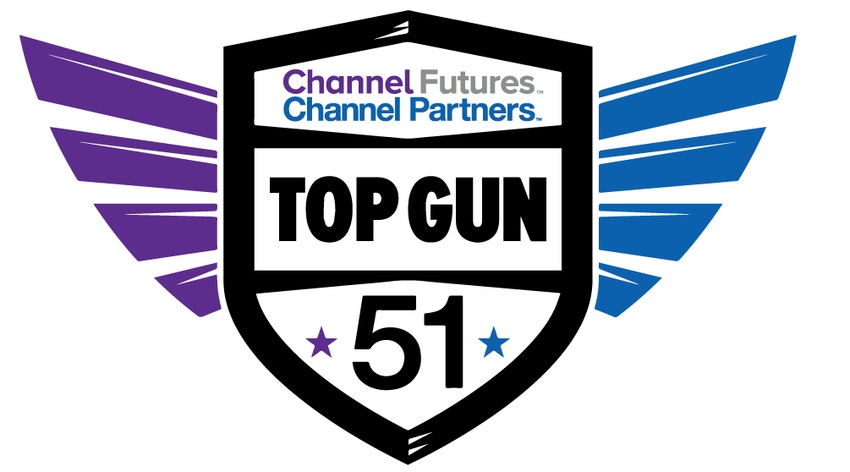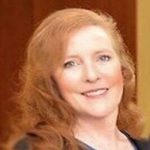SAP's partner experience senior VP talks about important changes to the company's partner program.
November 10, 2020

SAP entered the year with an ambitious agenda for its partners. But the COVID-19 pandemic forced the company to delay implementation of significant enhancements planned for the SAP PartnerEdge program.
During its spring partner conference, the company outlined the enhancements and revised timelines. Teri Hamann, SAP’s partner experience senior VP, previewed the changes at the conference and made them official late last week. Hamann is also a member of this year’s Channel Partners/Channel Futures Top Gun 51, which recognizes premier leaders in the indirect IT and telecom channel. The criteria includes advocacy for the channel and commitment to partners’ business success. There’s also dedication to earning the channel’s trust.

SAP’s Teri Hamann
Chosen by a panel of distributors, master agents and industry analysts for this year’s Top Gun 51 list, Channel Futures spoke with Hamann, focusing on the SAP PartnerEdge enhancements. The following are some highlights, edited for clarity.
Channel Futures: What is the overall goal with the changes coming to the SAP PartnerEdge program?
Teri Hamann: The SAP PartnerEdge program has been in place for 15 years and it has undergone very little change during those years. But it was not reflective of the transition of our business to the cloud. When we started the year, we had real ambitious goals to completely transform the program, and then COVID-19 came.
CF: Presumably, you decided when COVID-19 arrived, it wasn’t the best time to roll out a new program?
TH: Correct. We are trying to be thoughtful and roll things out sequentially over a couple of quarters going into next year. We decided to hold anything that we felt would be disruptive to a partner in terms of them having to do anything to support it, because everyone was struggling with COVID-19. So we slowed our rollout. However, we’ve got some really exciting things coming.
CF: Such as?
TH: We rolled out a significant improvement for our sell partners: cross-border certification. It means our sell partners can now pool their consultants across borders within a region to take advantage of growth opportunities. Prior to this year, the program was recognized at a country level. And there was no going beyond that set border of a country. With the enhanced program, we’re going borderless as much as possible.
SAP’s Teri Hamann is part of Channel Partners/Channel Futures’ 2020 Top Gun 51. This program recognizes today’s channel executives who build and execute channel programs that drive partner, customer and supplier success. See the full list. |
CF: What does that mean?
TH: A partner can take advantage and scale and grow much faster, without having to make huge investments in either offices or headcount in the different countries that they want to operate in. This will let them pool their consulting resources, which is a big advantage. It was very well received by the partners. For 2021, we’re going to extend it beyond sell partners and extend it to our services partners. It will allow them to have a lot more flexibility to meet some of our internal minimum requirements by being able to take advantage of that pooling. It applies to any of our partners that have either a reseller agreement with us or are an SAP service partner. Until now they were restricted to the border that they were certified in.
CF: Does this give them global reach?
TH: We have managed the relationship country by country. And now we’re bringing it up to more of a borderless regional level, with the goal of bringing it up to a global level at some point in time.
CF: Will it expand to global next year or is that further out?
TH: Probably 2022 or 2023. It depends on how quickly we can operationalize it.
CF: Why is the shift to cross-border certification important?
TH: As you think about dealing with everything at a country level, if you’re a single entity, or a single country partner, that’s not an issue. But we have a lot of partners that are …
… multi-country, multi entities. And for them to deal with us country by country is very difficult. So, we’re introducing the partner grouping agreement, which allows us to manage the relationship of that partner more holistically. It will allow us to move to a single invoice for partners. It lets us drive a lot of automation. The partner grouping agreement actually brings a lot of benefit in being able to manage a partner on more of a global, relationship level, and will allow us to clean up many of the internal operational challenges that we’ve had in the past.
We are substantially reducing the cost of partnership agreement with SAP. Until now, any partner who wanted to join the PartnerEdge program had to pay a fee in every country for every entity. Today, we’re tiering the fee structure at a substantially reduced price. Again, that will let us manage more of the holistic relationship beyond just the border or the country that they’re in today.
CF: How many of you partners fall into this category?
TH: We have many partners who only engage with us in one country because it’s been somewhat cost prohibitive for them to engage with us beyond that. And even for smaller partners who are on a growth trajectory, we want to make sure that what we put in place foundationally – and fundamentally – will support their growth. Short term, hundreds of partners will benefit from this change. We’re setting it up for the future to create an environment where partners are ready and able to grow with us. That’s a big change. Historically, we were set up for the here and the now. We’re now looking for the long game.
CF: How has COVID-19 overall affected your approach to all this?
TH: We really focused on introducing things that would not disrupt our partners’ business but would support and help them deal with COVID-19. We intended to start rolling a lot of these things out in July. But we slowed the timeline because we knew a lot of partners would be focused on clawback [and] delivery, depending on how they were impacted. And we introduced many initiatives this year to help our partners deal with COVID-19.
CF: One thing you described at the partner conference was an effort to standardize SAP’s own supply chain. It aims to ensure more consistent execution across various engagement touch points. How is that coming along?
TH: We have worked diligently to standardize our experience operating model across all of SAP to ensure that we have a consistent strategy with regard to swim lanes. Those include the roles and responsibilities, the types of engagements that we support and then the repeatability and the predictability of that engagement. We also introduced a “follow-the-sun” concept this year, which has allowed us to avoid almost near-zero lead time in responding to a partner inquiry. We put in place across our hubs across the world, a strategy that as one region shuts down for the day, the next region picks up and ensures that if any inquiries or escalations come in during off hours for that prior region, the next region picks that up, and then it follows the sun, so we could have, near-zero lag time.
CF: Has that helped?
TH: Within the first two months, we had over 1,000 queries that we’ve been able to support off-hours. The changes have been very successful and well received.
CF: How do you measure that?
TH: We implemented a framework that allowed us to standardize and streamline all the feedback that come in from various sources from our partners. And we put a framework in place by which we built an XNO dashboard. That allowed us to marry experienced data with our operational data. And we embedded predictive and sentiment analysis capabilities into that dashboard to allow us to really understand the key drivers of the pain points, and what would impact NPS [net promoter scores] based upon the feedback from our partners. It allows our field to understand the …
… key areas where we have consistent issues impacting our NPS. We’ve integrated that with our ticketing system, which allows us to generate tickets and have a closed loop process where now we hold our teams accountable for ensuring as issues are raised that we actually address them and that we close them out. And those changes alone have allowed us to improve our NPS by 333% year over year.
CF: One enhancement you mentioned at the partner conference was adding predictive capabilities to help understand key influencers of NPS. How effective has that been?
TH: It’s really cool. It provides us laser focus, where we’ve actually built in simulation capability. For example, through the dashboard, and through the sentiments and predictive analytics, we were able to isolate the top priority drivers of NPS based upon all the feedback — multiple sources of feedback that are coming in from partners. And it takes it in and digests that. Then it comes back with a report pointing to areas impacting NPS.
CF: What about the new partner finder that you announced?
TH: We’re aiming to have a prototype and demo ready for the field kickoff in January. We are beginning to pilot and get some partner feedback beginning in the fourth quarter. And we are looking for [general availability] around late second quarter or early third quarter of next year.
CF: What will it offer?
TH: The partner finder in the future will be designed to support the customer journey and the partner journey. It is designed to make a best fit recommendation for customers based on their search criteria. But it’s also being designed to support partner to partner collaboration.
CF: Are there other partner experience improvements coming?
TH: We’re going to be rolling out competencies beginning next year, probably about the second half. We are running a pilot for the competencies right now with several hundred of our partners. By the end of next year, we plan to sunset the gold and silver tiers that we have today. And the competencies will become the way that we allow partners to differentiate level of expertise or what they have been able to attain in terms of their investment of SAP. We will have competencies based on solutions and by line of business and competencies around industries. Then, the second dimension that we’re kicking off now is customer ratings. We’re kicking it off now and hoping to have by the latter half of next year.
About the Author(s)
You May Also Like


